The E.I. du Pont de Nemours & Co. powder yard workers lived immediately adjacent to where they worked in densely populated neighborhoods. Although wage-earning people (like those along the Brandywine) comprised the majority of Americans, historians still know relatively little about workers’ domestic lives - how they furnished their homes, how they used interior spaces, where they acquired various kinds of goods, and especially, what these goods meant to their owners.
Hagley photographs and oral histories combined with actual objects in museum collections and sources in public archives, like probate inventories (listings of a person's belongings and assets at the time of their death) and advertisements in newspapers, helped Margaret Mulrooney, author of Black Powder, White Lace, re-furnish the homes of Irish immigrants along the Brandywine.
PRIMARY SOURCES
Mary Maxwell at her kitchen stove photograph, 1901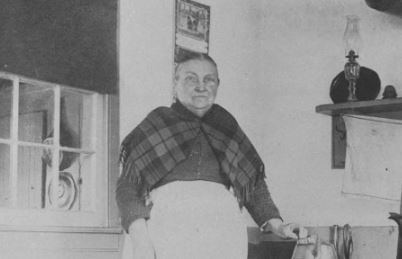
Mary Ellen Warrick Maxwell is seen here beside her large cooking stove and other kitchen items. Such stoves were both practical and cultural, signaling the family’s ability to purchase and maintain such a costly object. Maxwell's husband drove wagons of gunpowder to the ports for shipping, and the family lived in Wagoner’s Row, where many other powder yard workers resided.
Another photograph in Hagley's collection shows Mrs. Maxwell and her family in 1910.
Powderman Gilbert Mathewson photograph, circa 1901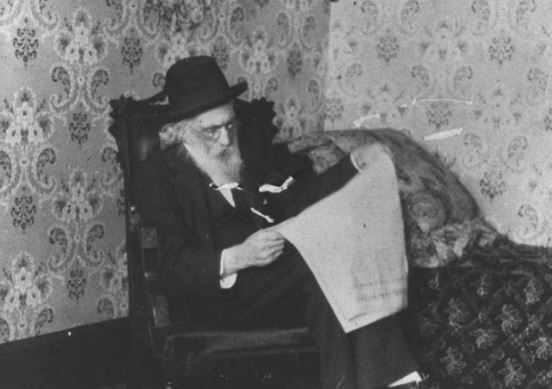
Gilbert Mathewson is seen here reading a newspaper in his home in Henry Clay Village. The furnishings, floral wallpaper, carpeting, and upholstered daybed affirm Irish powder mill families' attention to their interior spaces. This room likely functioned as a parlor.
Gilbert Mathewson's son detailed his memories of his father and his experiences growing up in the area in this oral history interview, conducted in 1968.
Catherine Cheney interview, 1964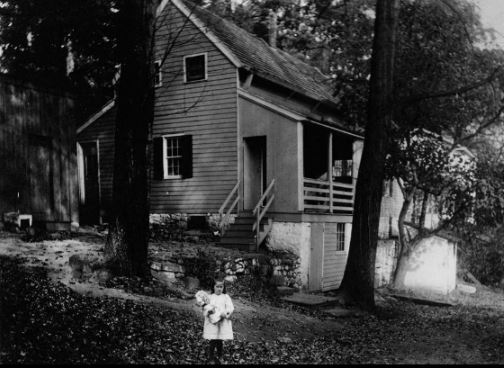
The granddaughter of powder yard worker James Cheney, Catherine Cheney, gave multiple interviews in the 1960s that provided rich details about interior furnishings and the family's use of space. The multi-generational family lived in several locations, but she chiefly resided in the Free Park neighborhood. In one interview, she described her family's parlor furniture, which included a pump organ that her sister would play. Such musical instruments were high-status objects in working people’s homes,
A photograph in Hagley's collection shows Mrs. Cheney as a small girl outside her family home.
Cabinetmaker Samuel Price side table, 1853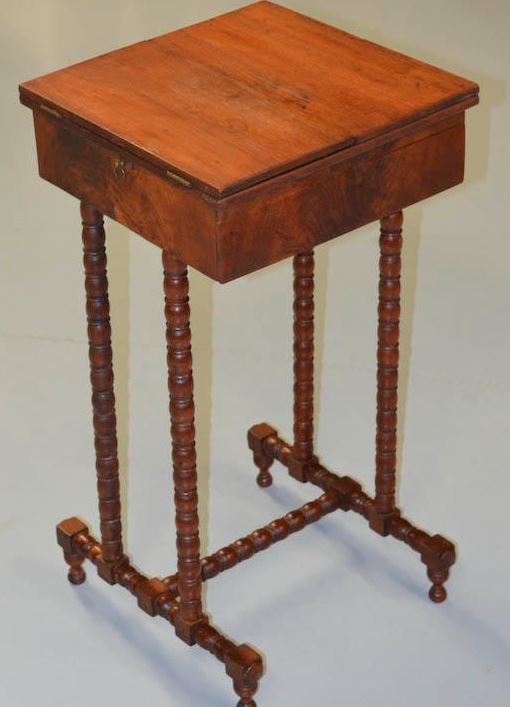
Samuel Price, born circa 1816, operated a small furniture business in the Rokeby Mill building at the foot of Breck’s Lane, within walking distance of the powder yard gates. Sophie du Pont commissioned Price to make several small, plain work tables, including this one, which shows the type of furniture that would have been available for Irish immigrants to purchase locally.
Eleanor Kane interview, 1984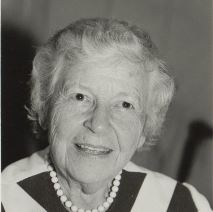
Born in 1905, Eleanor Kane, as a child, often visited the Free Park neighborhood of the powder yard worker community, where her mother grew up. When interviewed in 1984, Kane explained how her family purchased "good things in life that would last," like how her grandmother purchased the family a piano for four hundred dollars in cash. She described her mother taking piano lessons and singing and playing the piano to entertain her grandmother. The instrument meant so much to the family that it passed to Kane's mother after her grandmother died.
Ella Fitzharris interview, 1984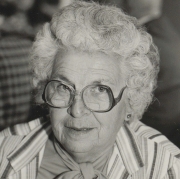
Born in 1911, Ella Fitzharris grew up near the powder yards, and she recalled her mother’s collection of lace curtains when interviewed in 1984. Lace curtains served as an important symbol of refinement and gentility due to their delicacy. Irish immigrants often identified as either “lace curtain” or “shanty” Irish.

